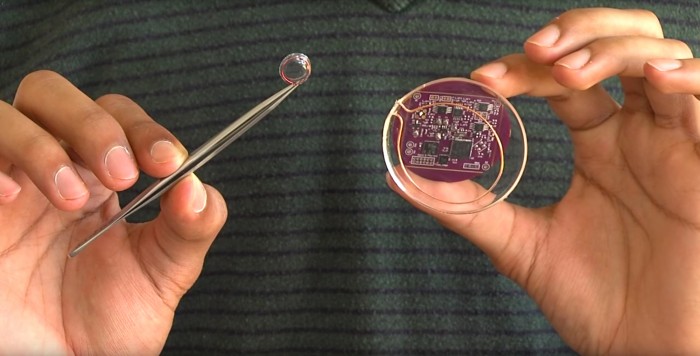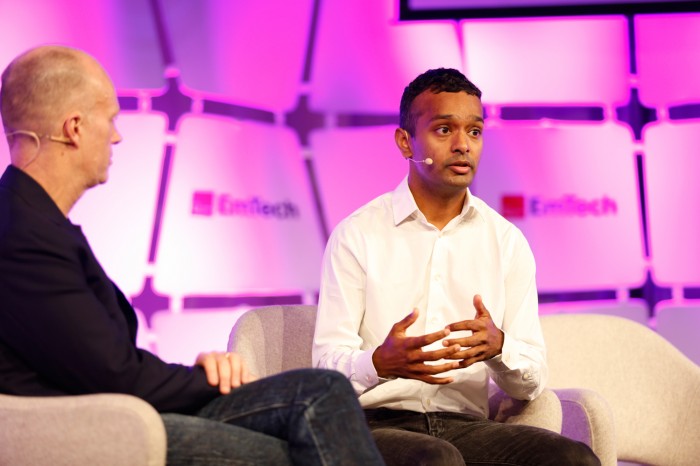This Contact Lens Will Kick-Start the Internet of Disposable Things
Shyam Gollakota has built a contact lens like no other—it can connect to a smartphone over Wi-Fi.
The prototype demonstrates technology he says can bring Internet connectivity into just about any object, even disposable ones. Gollakota, an assistant professor at the University of Washington, invented a way for devices without batteries to communicate and power themselves by recycling signals from Wi-Fi devices or radio and TV stations (see “10 Breakthrough Technologies 2016: Power from the Air”).
“As you sit around in this room we have so many radio signals bombarding us,” Gollakota told the audience at EmTech MIT 2016 on Wednesday. “You can harvest power from these signals [and] use reflections to create transmissions.”

Gollakota and his grad students built their Wi-Fi contact lens to demonstrate the potential for their technology, known as backscatter, to improve medical devices, whether cheap sensors or more complex implants. They also built a flexible skin patch that can sense temperature and respiration, a design that could be used to monitor hospital patients.
Another prototype takes the form of a concert poster that broadcasts a snippet of the band’s music over FM radio. Recent tests have shown that backscatter devices recycling the signals from a Wi-Fi router can make connections over a range of up to a kilometer, or throughout a three-story house.

Backscatter technology makes it significantly cheaper to add connectivity to a device or object. Not only does it remove the cost of a battery, but the circuitry needed to communicate in this way is simpler and cheaper than conventional radio hardware.
“The goal is having billions of disposable devices start communicating,” Gollakota said.
To commercialize their technology, Gollakota has cofounded a company, Jeeva Wireless. He says the startup is already talking with a large pharmaceutical company about adding connectivity to a commonly used disposable medical product.
Gollakota declined to identify the product or company due to commercial sensitivities, but said the deal would get him well on the way to his goal of a billion devices. “If it works out it would be hundreds of millions of devices per year,” he said.
Keep Reading
Most Popular
Large language models can do jaw-dropping things. But nobody knows exactly why.
And that's a problem. Figuring it out is one of the biggest scientific puzzles of our time and a crucial step towards controlling more powerful future models.
How scientists traced a mysterious covid case back to six toilets
When wastewater surveillance turns into a hunt for a single infected individual, the ethics get tricky.
The problem with plug-in hybrids? Their drivers.
Plug-in hybrids are often sold as a transition to EVs, but new data from Europe shows we’re still underestimating the emissions they produce.
Stay connected
Get the latest updates from
MIT Technology Review
Discover special offers, top stories, upcoming events, and more.